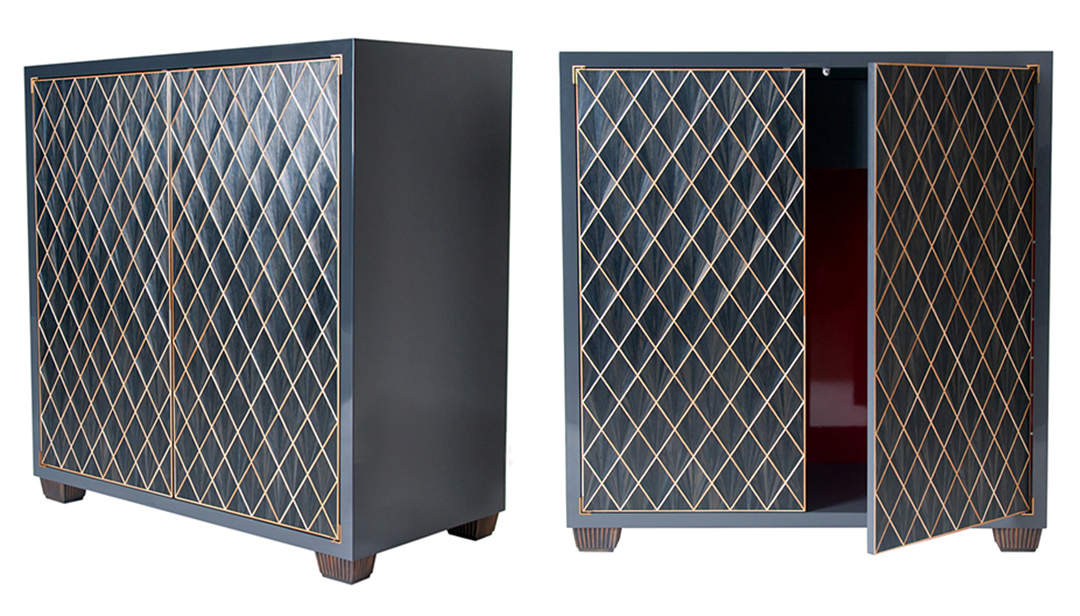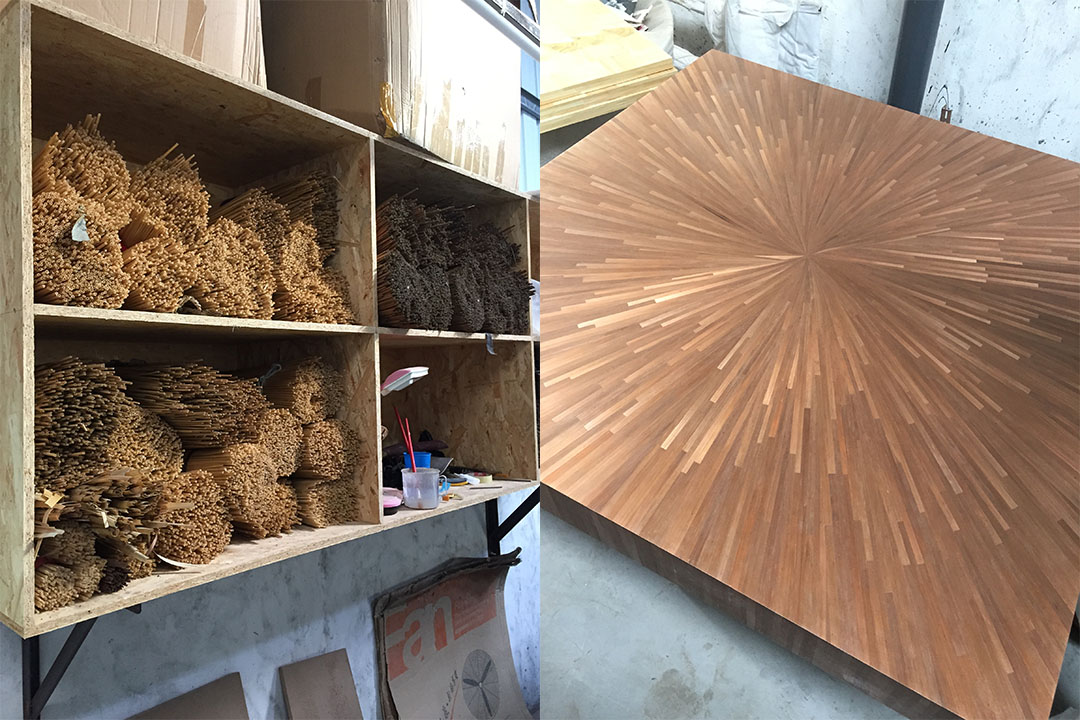Artists spend their lives turning their souls into tangible pieces of expression. Their bodies of work not only stand as reminders of who they were, but in a way they serve to keep them alive and well for future generations to discover. Art is, in its own way, a form of immortality.
In this sense, visionary French designer Jean-Michel Frank is still very much with us, despite having left this world tragically back in 1941 when he took his own life. Frank was known for minimalist interiors decorated with plain-lined but luxurious high end furniture made of decadent materials such as shagreen, mica, and intricate straw marquetry – perhaps his signature work.
As a big influence on designer Eric Brand, Frank’s aesthetic can be found in Juniper’s line of equally luxurious high end furniture. Specifically, the Straw Cabinet (J12) is inspired by the rich history of marquetry in general, but the technique favored by Frank specifically – a method of dying which allows for a depth of color that maintains the integrity of the straw. The sexy, textural touch of the charcoal and blonde straw is juxtaposed by a high-gloss elephant gray lacquer.


According to Frank, “the noble frames that came to us from the past can receive today’s creations.” In other words, he believed that there was inspiration to be drawn from the merging of past and present sensibilities. The severity of contemporary design was softened by his open-minded approach that mixed styles, cultures, and materials to create multi-dimensional surfaces and compositions. In short, Frank recognized furniture as not just a functional necessity, but also an artform to be appreciated over time.
The WWII era was a time of upheaval, of strife, of worlds crashing together old and new. Perhaps Frank’s work served him as both an artistic escape and a venue for social commentary. Now, nearly 80 years later, Frank’s high end furniture routinely reaches five-figure prices at auction, and the buyers have included A-listers like Karl Lagerfeld, Yves Saint Laurent, and Ronald Lauder. For those of us who are unable to obtain one of his original works, we hope that Juniper’s Straw Cabinet can serve as a humble-yet-luxurious homage to Frank’s unique aesthetic and sensitive spirit.